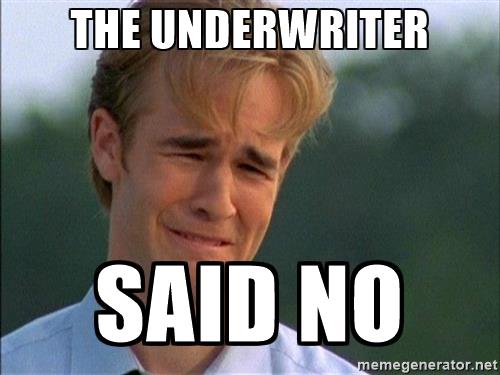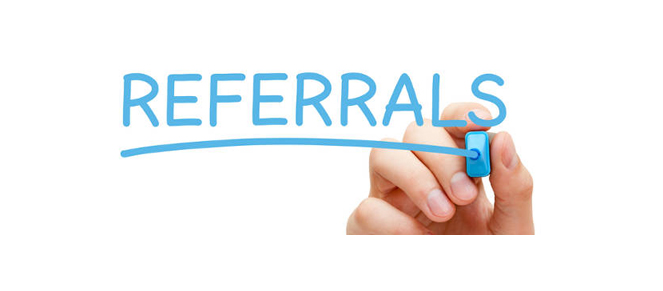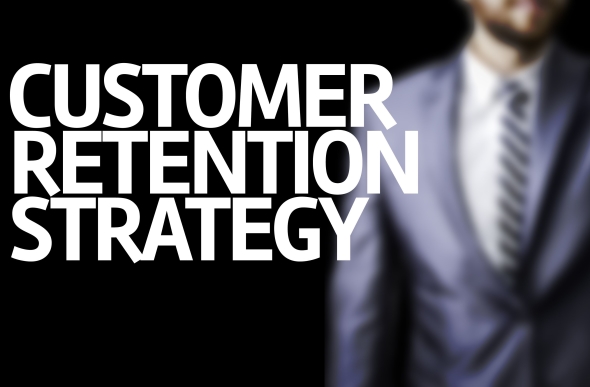
We’ve been blogging a lot about leads – how to generate them, order them, door knock them, contact them and follow up with them to keep your sales pipeline full. Although a steady flow of insurance leads is critical, just having a bunch of leads isn’t the goal. Even the fullest pipeline is worthless unless an agent can successfully turn leads into clients and actually close Final Expense sales.
That also happens to be the question agents ask me most about our insurance leads is how to close them. We tried to answer that question thoroughly in our book, “How to Qualify, Present & Sell Final Expense and Medicare Supplements to Seniors.” As the title suggests, there are two things an agent has to do really well in order to close Final Expense leads, which we’ll discuss in this blog. (We’ll come back to Med Supps in our next post).
To sell Final Expense, insurance agents have to:
- Know how to qualify a sales lead to determine what they need, what their health can allow, and what they can afford
- Be able to deliver a finely tuned Final Expense presentation that answers prospects’ questions, addresses their objections, and illustrates the benefits of this type of insurance.
How to Qualify a Prospect
Different agents have different definitions of what a qualified Final Expense lead should look like, and they ask many different questions to determine which leads are actually qualified. However you do it, effectively qualifying sales leads can save you time and maximize sales. Instead of wasting hours chasing bad leads who might never buy, having a strong qualification process in place will help agents manage their time better by prioritizing potential sales.
After talking to more than 20 Final Expense agents who shared their insights in our book, we were able to boil down the process of qualifying Final Expense prospects into three main areas:
- Verify that a prospect has a NEED for a Final Expense insurance plan
- Affirm that the prospect’s HEALTH conditions are accepted by the company you recommend
- Confirm that the plan fits the prospect’s BUDGET
As we explained in the book, these don’t necessarily happen in any certain order, and in fact, Final Expense presentation and qualification stages may even overlap:
“To qualify a prospect’s need for Final Expense, you may need to provide education about the various types of life insurance coverage. Maybe you qualify their budget as you present multiple quotes, and then use the health qualification questions to close the sale. Highly experienced agents can transition seamlessly between asking qualifying questions, overcoming obstacles, and presenting plan options in a way that feels more like education than sales…”
However you do it, the qualification process has to happen before you even know which Final Expense plans to present a senior. Here are some ways other agents qualify and present to close more Final Expense insurance sales.
Qualifying a Lead’s Need
Don’t let leads fool you – just because they might say they already have insurance doesn’t mean they might not need more.
It’s your job as an agent (and, really, as a seller of anything) to discover what exactly the prospect needs, and what you can provide to fill that need. Qualifying their need for a plan that will protect the prospect’s loved ones from their final expenses after they pass away, is the first step.
Sometimes, a lead might come right out and tell you why they agreed to have someone give them a call or a visit to discuss the cost of their burial or cremation. Other times, they might need help articulating their interest. To prompt them along, one strategy of how to qualify a prospect’s need is to tell them why others typically buy life insurance, and let them pick which reason they relate to.
Ron Wiza qualifies Final Expense leads in person with this script:
“When folks respond to this inquiry, it’s usually for one of three reasons:
(1) They realize that they don’t have any protection in place now and they want to make sure that when they do pass, there will be money available to help relieve the financial burden for their family and loved ones.
(2) They have coverage but they’re not sure exactly what they have or if it’s enough coverage.
(3) They have adequate coverage but would like to purchase a little bit more so that they can leave a special gift for a grandchild, or to their church or their favorite charity.
Of the three, where would you fit in? Is there anyone who would be financially impacted by your death? On a scale of 1 to 10, how important is it to have your final expenses taken care of in case of your death?”
Michael Smith says, “The number one qualifying question is WHY did they send the card in?” He presents those options this way:
“Mrs. Johnson, most people that send the card in do it because they don’t have any coverage at all. Have some coverage but feel it’s not enough and wants to add to it or have plenty of coverage but want to see if there is a better rate or just give a gift to grandkids.”
Once a prospect explains their reason for the meeting, you’ll find out if they already have a plan in place or not. If they don’t, you can ask four additional questions to better understand their need for Final Expense insurance:
- “Are you planning a traditional burial or cremation?” Make sure they understand the costs involved with their final wishes.
- “Have you or your family had to pay for someone else’s final expenses?”
- “Who’s your beneficiary? Are they financially prepared to pay for your final expenses?” Mike Shure recommends taking note of the beneficiary’s name so you can mention how the plan will benefit that person specifically.
- “Is there anyone else who will need some financial help if you pass away (to cover debt, loss of spouse’s Social Security income, other final expenses beyond a funeral)?”
Lawrence Malone hits on a few of those questions in this Final Expense script:
“Have you ever assisted in paying for a loved one’s funeral? If yes, who?
“Oh wow, so they didn’t have ANY life insurance? That had to have been a tough pill to swallow, right? Is there any reason why you haven’t purchased any life insurance until now?
“So if you passed today without life insurance, who will be the person who will have to take care of all your arrangements and be in charge of coming up with the money to pay for it all? Are they in a position right now to do these things?
“So you don’t want BENEFICIARY to have to go through what you did when (whoever died) died, right?”
Denise Rangel asks similar questions while building rapport, by sharing her own experiences with prospects:
“Ask them if they have ever been responsible for paying for someone’s funeral. Where the family had to gather money from several individuals. Or if they have seen families with a jar at the local stores with a story, trying to collect money for a funeral. I explain that as a young family with three small children, my husband and I were expected to contribute money for a funeral for a family member and it was very hard for us.”
Educating Final Expense Prospects
To qualify a lead’s need for Final Expense life insurance before you start presenting plan options, you may need to educate them about what it is, what it can do, and how it compares to other types of life insurance. This education process starts to build value into the solutions you’ll offer.
Explain to prospects the difference between term life insurance and permanent life insurance, like whole life. While a term life policy will eventually expire, maybe even before the senior even dies, a whole life policy will last their whole life.
Ron Wiza explains it this way:
“I give a short visual presentation of ‘Term vs. Guaranteed Issue vs. Whole Life.’ The reason is: I believe the clients see this stuff on the television and in the mail and have questions about it. So I bring it up and explain the differences and how they work and why whole life is best for people on fixed incomes who want to take care of their own final expenses.”
Carlos Guillen discusses the benefits of a Final Expense like this:
“I explain that whole life insurance is permanent; it never changes, rates never increase, benefits never decrease and it stays with you the whole way. Then I will explain the differences between term and permanent life insurance coverage.”
You should also discuss the two types of coverage or death benefits available through a permanent life insurance policy: immediate (or first day) coverage and graded (or modified) coverage. Explain that an immediate death benefit pays out as soon the policy is purchased, whereas graded coverage pays out a portion of the death benefit the first year (usually 30%), increases the second year (usually to 70%), and then pays out its entire face amount after the third-year policy anniversary.
Todd Graves explains the differences in coverage by telling prospects:
“Final Expense policies pay out the death benefit, no matter how long you’ve been paying on it. Whether you paid one premium or multiple, it’s reliable and immediately available when you pass so your loved ones don’t have to worry about what assets they’re going to have to sell fast, at less than value, in order to pay for your final expenses.”
As you’re educating prospects, emphasize the three guarantees of a Final Expense policy:
- The monthly payment will never increase.
- The death benefit will never decrease.
- The plan will never cancel, as long as you pay the premium.
Prospects have probably seen Alex Trebek making similar life insurance guarantees on TV – so be sure to explain how your solution differs from those commercials.
Lawrence Malone explains it this way:
“What we always suggest for people in your situation is whole life. These plans are regulated by the state. They are simplified issue, which means you don’t have to take any medical exams; you just answer a few health questions and we typically can get you coverage from the first day.”
“Unlike the plans you might see on the television, the coverage will never expire or cancel regardless of your age and health. Once you get covered, then the policy is guaranteed to pay out as long as you pay your premiums. And your premiums will also never increase.”
Personally, this is how I used to explain it to prospects: It’s going to sound silly but I SWEAR it always seemed to click for seniors when explaining Final Expense life insurance (whole life insurance). I would either draw a bucket on a blank piece of paper or bring a picture of a bucket with me. I would explain that if the bucket was full, it would be worth their death benefit (ex. $10,000). If they only made 10 premium payments of $50 a month before they passed away, their loved ones would still receive the full $10,000 (at this point circling the $10,000 at the top of the bucket and drawing an arrow with the $50 going into the bucket only filling up approximately 5% of the bucket), yet their loved ones receiving the entire $10,000 TAX-FREE.”
I say, “Even if you don’t save up the money, your loved ones still receive the benefit. Not to mention after years of paying into this policy, it builds cash value with interest (the savings account that these folks never had)! Here’s the catch: not everyone qualifies, and in order to qualify, I have to see if I can get your health qualified. Let me ask you a few health questions …”
Some other benefits of Final Expense plans to mention include:
- How the policy builds cash value that seniors can tap into in emergencies
- How the death benefit bypasses probate and pays the beneficiary tax-free
Tamara Sasso explains the supplemental benefits like this:
“I explain that it is a whole life policy, it lasts the rest of their life, and it starts day-one coverage (unless health issues are major). I let them know there is a cash value in the policy, and that the company will pay their family out with a tax-free check.”
After explaining the plan to prospects, agents should recap all of the benefits of Final Expense insurance with the biggest benefit of all – which is each individual prospect’s motivation for asking about information in the first place. Reminding prospects of the reason why they started looking at options can help personalize the benefits and get them emotionally connected to the solution.
Mary Dioguardi connects the benefits to her prospects by telling them:
“This is the last thing that your kids and family will remember about you, and how strong and beautiful of a person you are, for thinking of them and how much you loved them. It gives you peace of mind knowing that when you leave this life, your family will never question that you loved them for even a second. This is your last strongest statement to your family.”
Qualifying a Lead’s Budget
After years of experience selling insurance, talking with other insurance agents, and interviewing agents for our book, I’ve identified three main approaches on how to qualify a prospect’s budget for Final Expense insurance:
1. Multiple Choice
Present three options based on the prospect’s final wishes – usually $3K, $5K, and $7K for prospects who want to be cremated, or $7K, $10K, and $15K for traditional burial. This is how I used to qualify a prospect’s budget when I sold insurance. I’d emphasize that they can always come back for more coverage later, but it doesn’t do anybody any good if they select an option they can’t afford.
2. Top-Down
Start by naming a ridiculously high monthly payment, like $200, and then wait for the prospect to react. They’ll probably balk at the price, so keep lowering it a little bit at a time, gauging their reaction until they feel comfortable with an amount you name. This strategy can help agents write larger cases, but unless you can read people’s reactions very well, you may risk seniors overestimating their ability to pay – potentially setting yourself up for a policy lapse.
Jason Eichmiller uses this approach successfully, and he’ll say:
“‘The most coverage I can get you is $X, and that is just $Y per month.’ Most of the time they say they can’t afford it, so we settle on a lower amount. One out of 10 times, they take it.”
3. Open and Direct
In this straightforward approach, you simply ask prospects what monthly payment about they can afford on a plan that will pay for their final expenses so their family doesn’t have to. The key to doing this well is shutting the hell up after you ask the question because, as they say in sales, he who speaks first loses.
Mike Shure words the question this way:
“Not everyone can afford a $10,000 Final Expense plan, but as parents we want to make sure we cover as much of the expense as we can afford. Now based on your budget, you might qualify for more than the price of your funeral, but it could also be less. Keeping your budget in mind, what can you allocate on a monthly basis?”
Of course, these aren’t the only three ways to do it, and if you aren’t sure which approach the prospect is most comfortable with, just ask them!
Ron Wiza gives prospects options to determine their budget for Final Expense by saying:
“As I’m going through the numbers and the actual cost, I’m going to ask you that you promise me that if what I am showing you is too expensive, that you just simply let me know. Okay? There are two ways we can look at the pricing:
1) You tell me how much you want to put toward your Final Expense planning each month and I can figure out exactly how much coverage that will get you, or,
2) You can tell me how much you would like in coverage and I can figure out how much that investment would be per month. Which would you prefer?”
Qualifying a Lead’s Health
Some agents qualify a prospect’s health before budget, to determine if prospects have any health issues that might make limit their coverage or increase their payments. Others address budget before health, but to be proactive, you should at least ask about a prospect’s overall health before you start presenting solutions so you can avoid reneging your quotes if a lead reveals serious conditions later on in the process that might force you to switch companies.
Then there are agents who actually use the policy application as their health qualifier for prospects, using the paperwork to help guide prospects through the questions. But by the time you pull that paper out, you should already know about any chronic conditions they have, and whether those may trigger any underwriting issues.
Ron Wiza explains to prospects why the health questions are necessary, as part of his education to them about Final Expense:
“This is called non-medical, non-physical type coverage. You don’t have to be examined by a doctor to qualify. We do have to run through about 10 to 12 health questions that mainly have to do with major health issues, such as cancer or heart problems. Tell me, how’s your health? Over the last few years, any issues like a heart attack, cancer, diabetes, or stroke? Any other health conditions I need to know about?”
A prospect’s answers to these questions will determine whether they qualify for immediate or graded coverage – or whether their application might be denied altogether because of health history. In order to know whether or not a prospect’s health condition (or combination of ailments) will be accepted or declined by the insurance company you’re offering, well, you’ve got to know your products – in all of their glorious underwriting detail.
Final Expense Life Insurance Underwriting
Because life insurance companies want to minimize the number of unhealthy people they insure, they’ve all developed their own underwriting requirements that include certain conditions (or combinations of conditions) likely to cause a decline in coverage.
Some common conditions that can disqualify an applicant from getting life insurance coverage, are cancer (within 5 years), Lou Gehrig’s disease, cerebral palsy, dementia and AIDS. Companies might only offer graded coverage for other ailments like diabetes, heart attack, hepatitis, muscular dystrophy, COPD and drug dependency.
Captive agents may have their hands tied with coverage options, but an independent insurance agent has more tools in his toolbox, so to speak, because he has access to a wider array of companies that may accept policyholders with certain conditions that other carriers often decline. The more companies you contract with and the better you understand their underwriting requirements, the more effectively you can find the best solution for each prospect’s individual health history.
Want a Piece of PHI?
The Phone History Interview (PHI) is one of the final pieces of a Final Expense sale. The agent usually has the option whether to do the interview himself, or let the insurance underwriters call the prospect later to confirm their personal and medical details. Most agents hate dealing with the hassle because it often can drag the appointment out an extra 15 minutes to a half an hour.
But smart agents see the PHI as a way to reconfirm the lead’s commitment and verify their desire for coverage, instead of risking buyer’s remorse while they wait around for the insurance company to call them back for the PHI.
Tying it Back to the Why
If you can effectively qualify a prospect for Final Expense by establishing why they need coverage, how much coverage they can afford to budget, and whether their health is acceptable to the insurance company, you can rest assured you will close the sale.
Of course, there will inevitably be objections along the way that could derail the whole sale if you don’t know how to handle them carefully. We will cover objections in another upcoming post, our goal for this post was to explain how experienced life insurance agents approach the process of qualifying prospects and crafting a killer Final Expense sales presentation.
The key throughout the presentation, agents agree, is to keep emphasizing how your recommended solution helps solve the problem, reason, or realization that led the lead to request more info in the first place. In other words, keep tying it back to their “why.”
Michael Smith says:
“Benefits are directly related to their WHY. You can talk benefits all day long, but if it doesn’t address their WHY, then you’re not getting anywhere. That’s why TIE BACKS to their [prospect’s] WHY are so important; they remind the prospect of their priorities and desire to leave a positive legacy.”
We hope this post gives you a solid foundation for crafting your own sales presentation. Just remember, more than anything the presentation is about having a conversation with the prospect about what they want or what their goals are, and how you can help them compare their options for accomplishing those goals. Also, if you have any ways of qualifying leads that you find effective, but we didn’t mention in this post, feel free to share them below in the comments section – it’s all about helping each other out.
















0 Comments